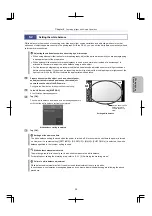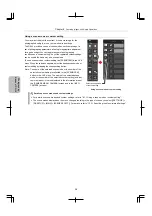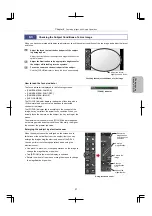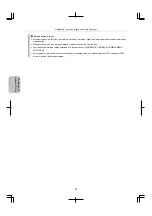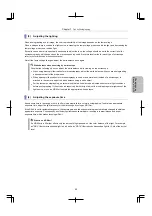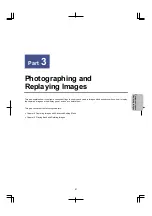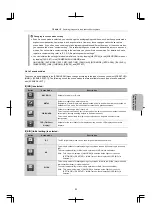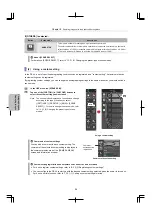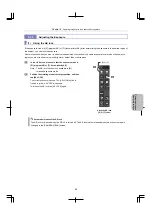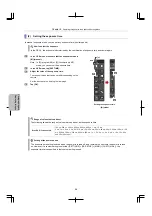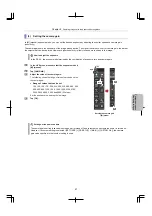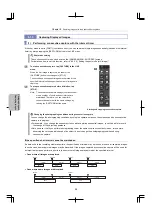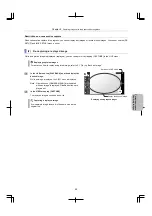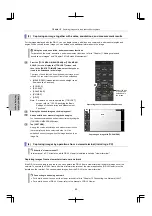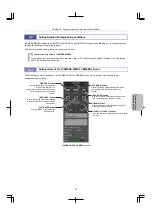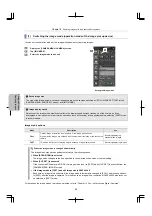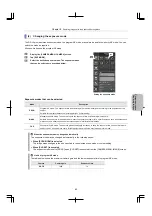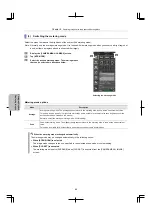
Chapter 7
Tips on Photographing
49
Photographi
ng
Bas
ics
of DS
-L4
(5) Adjusting
the
lighting
When photographing a color image, the color reproducibility of the image depends on the lamp voltage.
When a halogen lamp is used as the light source, increasing the lamp voltage produces a bluish light, and decreasing the
lamp voltage produces a reddish light.
Except in cases where it is specifically necessary to adjust the tone, the voltage should be set to the correct level for
microphotography, which depends on the microscope being used. Since this level varies for each type of microscope,
refer to your microscope's instruction manual.
Note: If the lamp voltage changes, adjust the white balance once again.
White balance when observing by a microscope
Consider the following when you adjust the white balance while viewing on the microscope.
When using diascopic illumination for microphotography, adjust the white balance while you are photographing
a transparent part of the preparation.
When episcopic illumination for microphotography is used or a camera lens (instead of a microscope) is
attached to the camera, adjust the white balance using a white object.
For fluorescent photographing, we recommend that white balance be adjusted under normal light conditions
before photographing. If the screen is excessively dark or bright, adjust the iris diaphragm or brightness of the
light source, or use an ND filter to obtain the appropriate white balance.
(6) Adjusting the exposure time
An exposure time in the range of 4 ms to 60 ms is appropriate for a normal photographing. To obtain an appropriate
exposure time, adjust the light intensity for the microscope by using an ND filter.
If the DS-L4 is set for automatic exposure, the camera gain and the exposure time are automatically changed to obtain an
appropriate exposure. Consequently, insufficient light increases camera gain, resulting in coarser images and longer
exposure time, which makes focusing difficult.
What is an ND filter?
An ND filter is a filter that affects only the amount of light passed, not the color balance of the light. For example,
an "ND2" filter cuts transmitted light in half, while an "ND16" filter reduces transmitted light to 1/16th of the actual
level.

